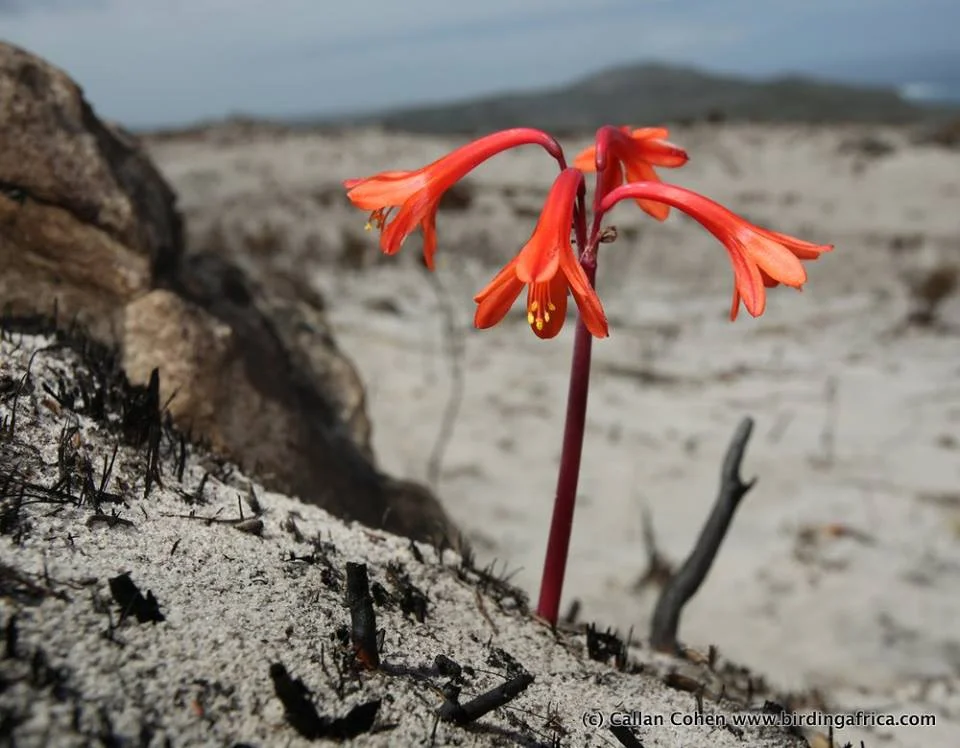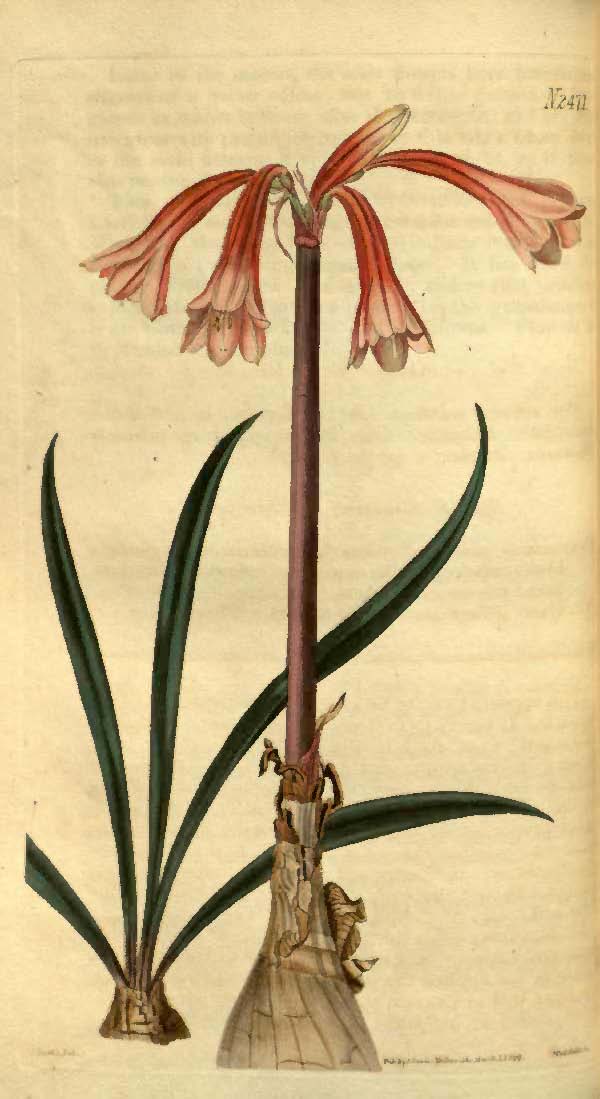Photo by Callan Cohen licensed under CC BY-SA 3.0
The flora of the South African fynbos region is no stranger to fire. Many species have adapted to cope with and even rely on fire to complete their lifecycles. There is one species, however, that takes this to the extreme. It is a tiny member of the Amaryllidaceae aptly named the fire lily (Cyrtanthus ventricosus).
The fire lily is not a big plant by any means. Mature individuals can top out around 9 inches (250 mm) and for most of the year consist of a nothing more than a small cluster of narrow, linear leaves. As the dry months of summer approach, the leaves senesce and the plant more or less disappears until its time to flower. However, unlike other plants in this region that flower more regularly, the fire lily lies in wait for a very specific flowering cue - smoke.
It has been noted that fire lilies only seem to want to reproduce after a fire. No other environmental factor seems to trigger flowering. This has made them quite frustrating for bulb aficionados. Only after a fire burns over the landscape will a scape emerge topped with anywhere from 1 to 12 tubular red flowers.
This dependence on fire for flowering has garnered the attention of a few botanists concerned with conservation of pyrophytic geophytes. Obviously if we care about conserving species like the fire lily, it is extremely important that we understand their reproductive ecology. The question of fire lily blooming is one of triggers. What part of the burning process triggers these plants to bloom?
By experimenting with various burn and smoke treatments, researchers were able to deduce that it wasn’t heat that triggered flowering but rather something in the smoke itself. Though researchers were not able to isolate the exact chemical(s) responsible, at least we now know that fire lilies can be coaxed into flowering using smoke alone. This is a real boon to growers and conservationists alike.
Photo by Callan Cohen licensed under CC BY-SA 3.0
Seeing a population of fire lilies in full bloom must be an incredible sight. Within only a few days of a fire, huge patches of bright red flowers decorate the charred landscape. They are borne on hollow stalks which provide lots of structural integrity while being cheap to produce. The flowers themselves are not scented but they do produce a fair amount of nectar. The bright red inflorescence mainly attracts the Table Mountain pride butterfly as well as sunbirds.
Once flowering is complete, seeds are produced and the plants return to their dormant bulbous state until winter when leaves emerge again. Flowering will not happen again until fire returns to clear the landscape. This strategy may seem inefficient on the part of the plant. Why not attempt to reproduce every year? The answer is competition. By waiting for fire, this tiny plant is able to make a big impact despite being so small. It would be impossible to miss their enticing floral display when all other vegetation has been burned away.


